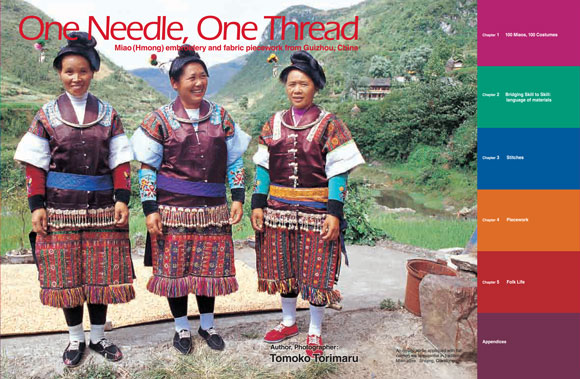
|
One Needle, One Thread
By Dr. Tomoko Torimaru
|
According to a popular saying, "If you meet 100 Miaos, you will see 100 costumes." Miao treat costumes like a local signature -- a proud display of technical skill mastered by one's village. The wide variations in traditional dress underscore the central role textiles play in Miao culture.
With no written script, the Miao have long used textile making as their method of language to record their history and beliefs. Their techniques are an instrument of vocabulary. Impressively, in embroidery, the breath of intricate and stunning surface embellishments is achieved with the most simple of tools -- a needle and thread.
|
Publication highlights
From 1995, Dr. Torimaru conducted research primarily in southwestern China and co-authored two publications with Dr. Sadae Torimaru on the material culture of the Miao people, focusing on growing plants, making dyes and yarns, weaving, dyeing, garment making, and all the associated skills and techniques involved. "One Needle, One Thread: Miao (Hmong) embroidery and fabric piecework from Guizhou, China", her third book, deals with embroidery and fabric piecework and the ethnic identity and symbolism contained therein.
Published in conjunction with the exhibition Writing with Thread: Traditional Textiles of Southwest Chinese Minorities, at the University of Hawai‘i Art Gallery, September 21 - November 30, 2008.
160 pages, 193 full color illustrations, 9 in. x 12 in. Paper. $38.00 + $8.00 s/h within the U.S.
|
|
| |